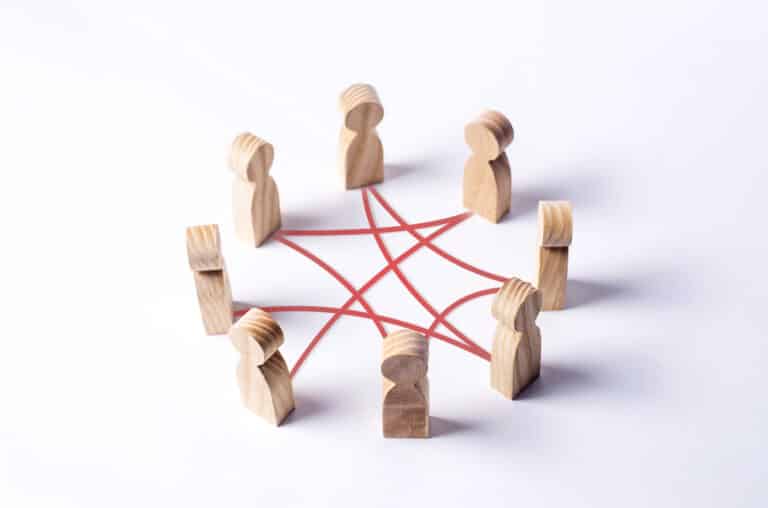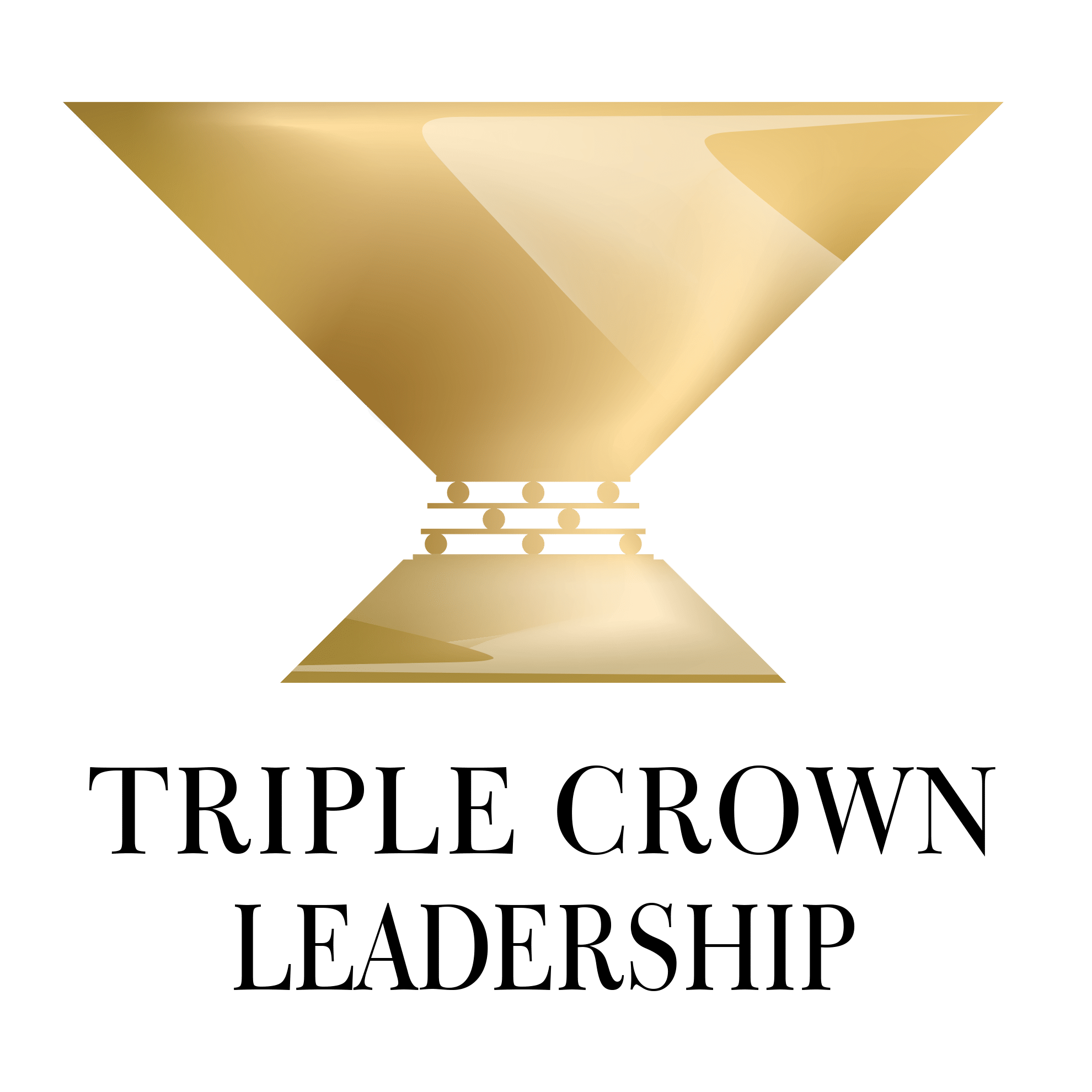Article Summary:
Dialogue is a rarely used but potentially transformative gathering and communication process that can help groups tap into their collective wisdom, realize new insights, and bridge divides.
+++
Good leaders are effective communicators. One powerful but rarely used form of communication is dialogue. Dialogue is a special form of respectful conversation between people involving an open exchange of ideas, opinions, and experiences in which participants understand they don’t (and can’t) know everything, so they’re open to genuine sharing and learning. It elicits collective wisdom and understanding through openness, respect, and deep listening.
Dialogue is an ancient practice with a rich history, from Socratic dialogues to dialogue circles from North American and other indigenous tribes, to circles of trust, Quaker clearness committees, and other variants. It’s a part of what we term tilting towards “velvet” and away from “steel”—and also fostering stewardship.
In dialogue, participants are inquiring to understand something better or more deeply, and they’re open to investigating or challenging their own thoughts and beliefs. They’re open to the possibility of a new shared understanding.
Dialogue also involves speaking from the heart, not just the head, and tapping into our inner (and collective) wisdom. William Isaacs, founder of Dialogos, calls dialogue “the art of thinking together.” We’d add that it also involves learning together.
A key part of dialogue that’s difficult for many today is that it involves honoring silence. In the silence between comments—sometimes a long silence—people are absorbing what’s just been said. That’s often where the real breakthroughs come from. When people honor the silence in between comments, the conversation slows down and people can really dial in to what’s emerging and the deeper issues beneath the superficial ones.
Our Experience with Dialogue
We became steeped in the practices of dialogue in our work over the years with the Vail Leadership Institute (VLI) and Vail Alliance, with the thought leadership of our friend and colleague, John Horan-Kates, and others like Parker Palmer, Suzanne Maxwell, David Bohm, Peter Block, Joseph Jaworski, and Peter Senge. From there, we learned that it’s more a philosophy of communicating than a tool or technique.
On some of our leadership retreats, we’d meet at the base of a Colorado mountain and hike up together in small groups, getting to know each other in a beautiful natural environment. We’d hike up to a yurt (a large portable tent) and then sit in a large circle—symbolically important to avoid any sense of hierarchy—with a couple dozen people. We’d have a dialogue about an important and timely issue, beginning with deep and provocative open-ended questions.

The conversation in these dialogues was deliberate and reverent. One distinguishing factor is that people in the room recognized wisdom and insight wherever it came from, regardless of rank or title. All voices were honored. Occasionally, one or two people fell back into old habits of ego, trying to impress others or win the conversation, but those felt out of place and fell flat.
Sometimes in these dialogue sessions, we passed a talking stick around, signaling that the next person could talk only after the previous speaker had finished (a practice used in some Native American tribes). It was a respectful way to maintain attention on the person speaking and avoid interruptions.
Often, these dialogues led to powerful bonding among participants, as we heard each other’s stories and convictions—better understanding where they’re coming from. The sessions were often profound and uplifting.

Leadership Derailers Assessment
Take this assessment to identify what’s inhibiting your leadership effectiveness. It will help you develop self-awareness and identify ways to improve your leadership.
The Critical Elements of Dialogue
An effective dialogue requires a willingness to honor certain ground rules and practices that are all too rare in our frenetic lives, such as:
- listening deeply, respectfully, and nonjudgmentally to one another
- not interrupting
- being open to new ideas and willing to change our mind
- seeking to understand others’ viewpoints
- honoring every comment made
- looking for common ground*
- speaking only for ourselves and not assuming we can speak for others
- sharing our own experiences and beliefs—as well as why and how we came to believe them
- speaking to everyone present so all are included
- being patient with the silence
- avoiding giving advice or rushing to premature conclusions
- avoiding “gotcha” questions (e.g., “How could you possibly believe that?”)
- avoiding making people wrong
- avoiding triggering words/phrases and cheap shots that may cause others to react emotionally
The Physics of Dialogue: From Individual Parts to the Whole
David Bohm was a prominent theoretical physicist who contributed ideas not only to quantum theory but also to neuropsychology and the philosophy of mind—including ideas about dialogue and its potential for transcending divisions.
Bohm described dialogue as “a free flow of meaning among all the participants” and noted that it can demonstrate our capacity for generative conversation and collective intelligence flowing into coordinated action. He likened dialogue to superconductivity: “In superconductivity, electrons cooled to a very low temperature act more like a coherent whole than as separate parts. They flow around obstacles without colliding with one another, creating no resistance and very high energy.” The idea is merging into a collective whole—and, again, thinking and learning together.
“At present, people create barriers between each other by their fragmentary thought. Each one operates separately. When these barriers have dissolved, then there arises one mind, where they are all one unit, but each person also retains his or her own individual awareness. That one mind will still exist even when they separate, and when they come together, it will be as if they hadn’t separated. It’s actually a single intelligence that works with people who are moving in relationship with one another…. If you had a number of people who really pulled together and worked together in this way, it would be remarkable.”
-David Bohm, theoretical physicist and author
In his book, Stewardship: Service over Self-Interest, organization development author and consultant Peter Block notes that “in dialogue, you operate with a very different premise… a completely different frame of reference. In dialogue, you’re not building anything, you’re allowing the whole that exists to become manifest. It’s a deep shift in consciousness away from the notion that parts are primary.”
How Dialogue Differs from a Discussion
“A key difference between a dialogue and an ordinary discussion,” Bohm noted, “is that, within the latter people usually hold relatively fixed positions and argue in favor of their views as they try to convince others to change. At best this may produce agreement or compromise, but it does not give rise to anything creative.” The spirit of dialogue, he wrote, requires an “ability to hold many points of view in suspension, along with a primary interest in the creation of common meaning.”
One of the key insights is that we’re often too focused on—and inclined to race into—the content of thinking without paying enough attention to the process of thinking—and how we can benefit greatly from thinking together. If we improve the thinking process, we can greatly improve the quality of our thinking as well as its outputs.

Personal Values Exercise
Complete this exercise to identify your personal values. It will help you develop self-awareness, including clarity about what’s most important to you in life and work, and serve as a safe harbor for you to return to when things are tough.
Benefits of Dialogue
While engaging in dialogue isn’t easy, it has many benefits. For example, dialogue can:
- build trust between participants, since they feel heard and respected
- enhance listening
- bring new ideas, viewpoints, and perspectives to the table
- generate new ideas or possible solutions to try
- solve problems
- bridge factions
With its deliberate and searching approach, dialogue can allow mutual understanding and common ground to emerge naturally.
Heidi Burgess and Guy Burgess, authors of Transformative Approaches to Conflict, note that dialogue can be a great approach to help bridge divides on deep-rooted issues and conflicts (e.g., abortion, the Israel-Palestine conflict). They write that it “can lead to a transformation in the way the conflict is pursued from one which is highly destructive and divisive to one which is constructive and leads to personal growth.”
Two Key Points about Dialogue
Since the process of dialogue is so foreign to many in our time-pressed workplaces, it’s worth noting two key points about it that many people get wrong.
First, dialogue isn’t designed for all circumstances. For example, it’s not appropriate for addressing technical questions or challenges where specialized expertise can offer precise solutions. And it’s not generally appropriate for addressing a crisis when there’s no time to engage in its signature contemplative deliberation. We should also note that high-performance teams must leverage other communication modes, including constructive disagreement, in which they respectfully argue their way through a difficult topic, and conflict management.
Second, dialogue isn’t just about talk. It can often lead to transformative action. Many times, the group comes out of the dialogue session with a clear sense of what needs to be done and, importantly, why.
“Dialogue does not require people to agree with each other. Instead, it encourages people to participate in a pool of shared meaning that leads to aligned action.”
-Peter Block, Stewardship: Service Over Self-Interest
Four Different Ways We Talk to Each Other
Adam Kahane, a seasoned conflict resolution consultant, helps leaders with intractable disagreements find ways to communicate respectfully with each other to find common ground. He’s worked with Reos Partners in more than fifty countries, in some cases helping bitter enemies address daunting challenges.
Much of his work focuses on extreme situations where conventional collaboration isn’t possible (e.g., disputes related to race and power, gender-based violence and harassment, indigenous rights, and land reform in post-apartheid South Africa). In such situations, he calls for “stretch collaboration,” in which multiple groups learn to embrace both conflict and connection and move forward by experimenting when no straightforward solutions are possible.
The problem, he notes, is our tendency to blame others as a way to “avoid doing our own work.” It begins with a hierarchical “us versus them” mindset. In this mode, we’re self-centered and arrogant, overestimating the value and correctness of our own perspectives and actions while underestimating those of others. The result is that we impede potential collaboration, which is a shame, because in many cases, he notes, our enemies can be our greatest teachers.
In his book, Collaborating with the Enemy: How to Work with People You Don’t Agree with or Like or Trust, Kahane describes four different ways people talk to each other:
- Download: Here, a speaker feels he/she has the truth and spills it out to others. It’s a recital of their talking points without much listening and ineffective in getting most listeners to change.
- Debate: The speaker advocates his/her point of view, listens to other ideas being offered, and attempts to prove that his/her ideas are superior. It’s win/lose oratory. Debating may be better than downloading but still unlikely to convince others to change their minds.
- Dialogue: Within certain ground rules meant to create a safe space for deep and genuine exchanges, each party respectfully shares their opinions and listens openly to the experiences of others. They identify areas of agreement where they might develop some plan for how to move forward together, even if they aren’t in agreement on other elements.
- Presence: With “presencing,” according to Kahane, participants collectively “sense what is emerging and coming into being in a dialogue while being fully present and paying attention to the larger context so that the boundaries disappear.” According to Kahane, “presencing” combines being fully present and “pre-sensing” (sensing what’s in the process of coming into being). It entails listening from a higher perspective and not just from within our own thought-streams or just paying attention to one specific idea or person.

Crafting Your Life and Work Course
Regain clarity, direction, and motivation for your next chapter, starting with a powerful foundation of self-awareness and commitment to your values and aspirations.
Addressing Polarization
In today’s polarized politics, the practice of dialogue is exceedingly rare. Many of us are often guilty of substituting soundbites for thinking, deferring to the positions of our tribe instead of thinking for ourselves, selectively choosing the media, inputs, and facts we pay attention to while conveniently ignoring others, having contempt for those who disagree with us, and worse. We’re alarmed by this extreme polarization, yet we let it fester—or even contribute to it.
Thankfully, many organizations are working on addressing this corrosive phenomenon (e.g., Braver Angels, Living Room Conversations, Better Arguments Project, Civil Conversations Project, Make America Dinner Again, National Constitution Center, and many universities). Civil dialogue can help us come together, find common ground, and make progress despite differences.
Reflection Questions
- Are you downloading and debating too often?
- If so, are you willing to use more dialogue in your work, tapping into the wisdom of the group?
Tools for You
- Leadership Derailers Assessment to help you identify what’s inhibiting your leadership effectiveness
- Personal Values Exercise to help you determine and clarify what’s most important to you
- Traps Test to help you identify what’s inhibiting your happiness and quality of life
Related Articles
- “Good Leaders Are Good Storytellers”
- “Why Conflict Is Good—And How to Manage It”
- “Synthesis—A Critical Leadership Skill”
Related Books
- Peter Block, Stewardship: Choosing Service Over Self-Interest
- David Bohm, On Dialogue
- William Isaacs, Dialogue: The Art of Thinking Together
- Adam Kahane, Collaborating with the Enemy: How to Work with People You Don’t Agree with or Like or Trust
- Peter Senge, The Fifth Discipline: The Art and Practice of the Learning Organization
Postscript: Quotations on Dialogue
- “… the only sensible and intelligent way of resolving differences and clashes of interests … is through dialogue.” -Dalai Lama, spiritual leader of the Tibetan people
- “The best way to solve problems… is through dialogue.” -Malala Yousafzai, Pakistani education activist
- “In true dialogue, both sides are willing to change.” -Thich Nhat Hanh, Vietnamese Buddhist monk, peace activist, author, and teacher
- “Change happens by listening and then starting a dialogue with the people who are doing something you don’t believe is right.” -Jane Goodall, English primatologist
- “Discussion is impossible with someone who claims not to seek the truth, but already to possess it.” -Romain Rolland, French dramatist
- “A world without dialogue is a universe of darkness. If people don’t get together and share views and exchange ideas, they remain unaware, ignorant, and unconscious…. If fear rules our lives, we lose the core of our being…” -Erik Pevernagie, Belgian painter and writer
- “It’s a funny thing about dialogue: there’s a wave/particle-like aspect to it. When it’s present, you know it. You can’t fake dialogue. Yet when you focus on it too hard, and try to capture the process, you change it, and it collapses and vanishes.” -Peter Block, Stewardship
- “Two monologues do not make a dialogue.” -Jeff Daly, American designer
- “We have two ears and one mouth so that we can listen twice as much as we speak.” -attributed to Epictetus, ancient Greek Stoic philosopher
- “Most people do not listen with the intent to understand; they listen with the intent to speak.” -Stephen R. Covey, author, executive, and speaker
- “Deep change requires us to take into account the diversity, opinions, consensus, and conflict present in relationships. Dialogue is the process by which a community’s broad-reaching needs can be met.” -Suzanne Maxwell, leadership development coach and consultant
- “…let every person be quick to hear, slow to speak, slow to anger.” -James 1:19 (Holy Bible)
* Often, it’s helpful to have a skilled facilitator leading a dialogue session, especially when people are new to the process and when the group is large. But a skilled dialogue facilitator has a light touch and doesn’t control or direct the conversation. They set the ground rules and gently remind people of them only when needed. Otherwise, they let the conversation flow.

Triple Crown Leadership Newsletter
Join our community. Sign up now and get our monthly inspirations (new articles, announcements, opportunities, resources, and more). Welcome!
+++++++++++++++++++++++
Gregg Vanourek and Bob Vanourek are leadership practitioners, teachers, and award-winning authors (and son and father). They are co-authors of Triple Crown Leadership: Building Excellent, Ethical, and Enduring Organizations, a winner of the International Book Awards. Check out their Leadership Derailers Assessment or get their monthly newsletter. If you found value in this, please forward it to a friend. Every little bit helps!


